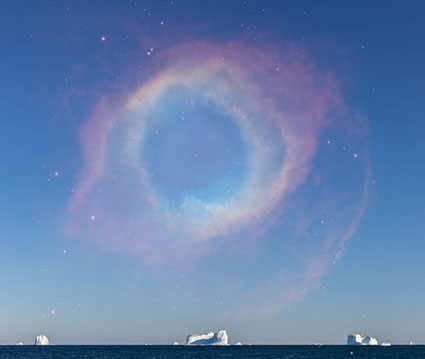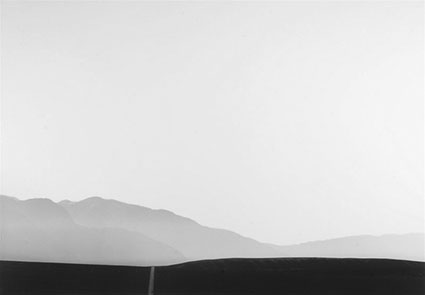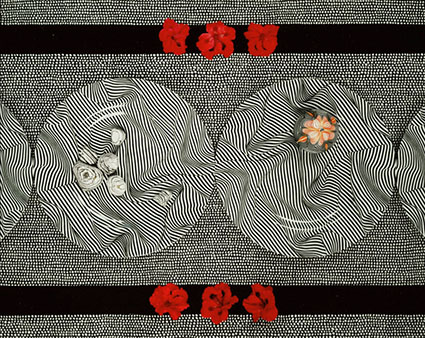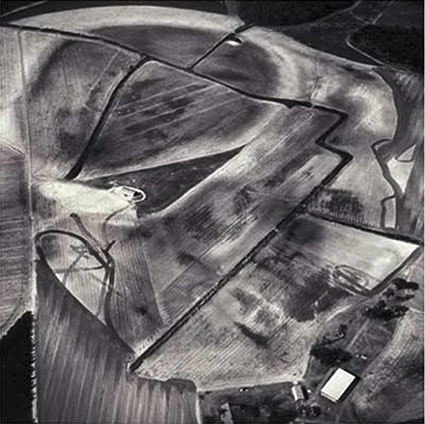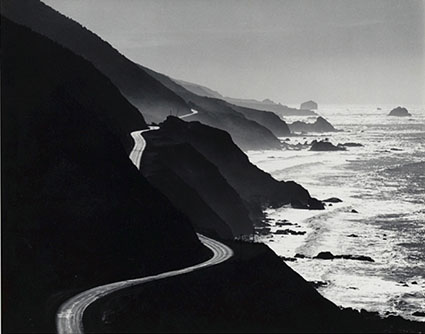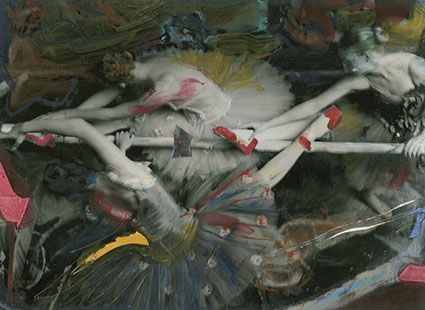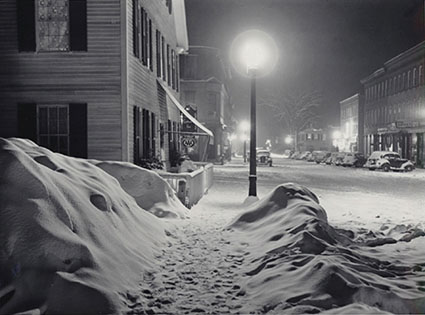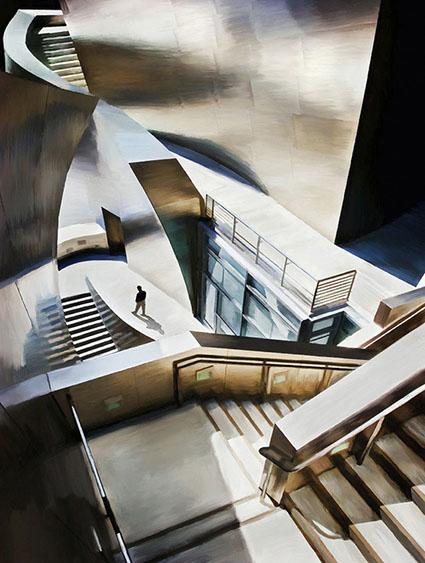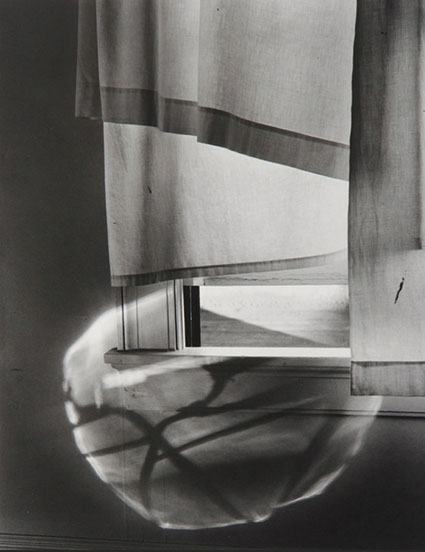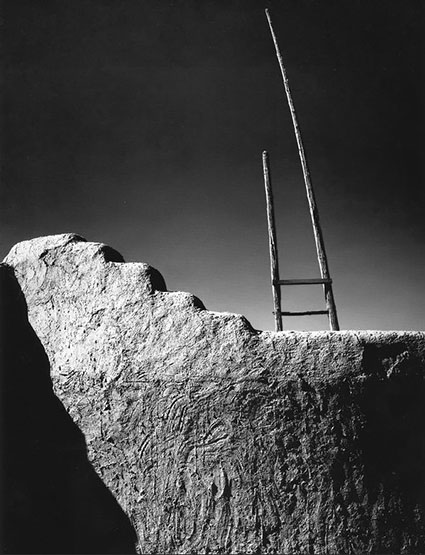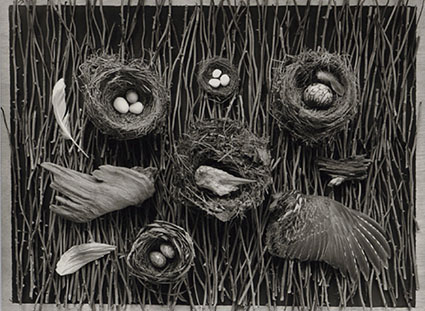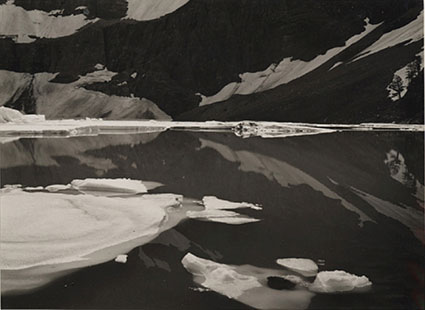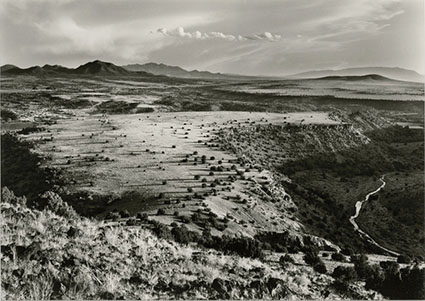New Free eBook – 12 Things We Learned From Each Other
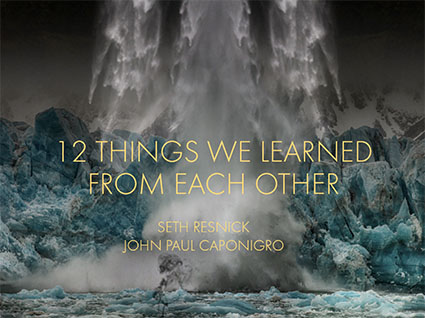
My new free ebook 12 Things We Learned From Each Other details lessons Seth Resnick and I learned from each other by working side-by-side.
What did we learn?
Find out here!
How To Steal Like An Artist
Copying isn’t bad; it depends on how and why you do it. I recommend you try copying – and be clear about why you’re doing it. Though I rarely share these kinds of studies with anyone, I make them frequently – and I learn a lot.
I’m not fond of phrases like, “Good artists copy, great artists steal.” (That phrase itself has a history that borders on theft. Read it here.) They can be interpreted as a legitimization of plagiarism, as long as your sources are unknown or you hide them well. A lot is lost when this happens; the original author goes unfairly unappreciated; the plagiarist tragically passes up the opportunity to find something of their own; readers are deceived; we all lose. The biggest trouble with phrases like this is that so many fail to go further after pronouncing them.
The best thing about phrases like this is that they memorably raise an important set of questions about the wide variety of purposes for copying: forgeries rob money (except the ones museums and collectors commission as insurance policies for exhibition); plagiarism robs intellectual property and content; studies educate the development of artists; appropriation references culturally important touchstones (best done with attribution like a quote); working in the manner of someone can be both a sign of respect (homage) and a way of fanning those flames of inspiration; and making new authentic work after being inspired by another strikes new sparks carrying the torch further.
Follow phrases like these with a rich conversation about the possibilities and you will be richly rewarded every time.
Here are a few resources that will help enliven your future discussions.
Study Finds Copying Other People’s Art Can Boost Creativity
Why Artists Are Allowed To Copy Masterpieces From The World’s Most Prestigious Museums
From Craft to Art – Leaving Dafen
Kleon – How To Steal Like An Artist
Things get really gray with appropriation.
When Does An Artist’s Appropriation Become Copyright Infringement?
Appropriation In The Digital Age – Richard Prince Instagram & The $100,000 Selfies
Who Actually Shot Richard Prince’s Iconic Cowboys?
Forgery has a fascinating history.
A Brief History of Art Forgery From Michelangelo To Knoedler & Co
How Museums Handle Forgeries In Their Collections
Orson Welles Movie F Is For Fake
Get more curated content in my Newsletter Insights.
Follow me on Facebook, Twitter, and Instagram.
12 Photographs Celebrated By Huntington Witherill
Huntington Witherill’s Orchestrating Icons
Huntington Witherill celebrates twelve photographs by other photographers.
Al Weber, Road to Badwater, 1971
Al Weber’s “Road to Badwater, 1971” demonstrates the effectiveness and power of design simplicity in depicting the immense spaces that characterize Death Valley. The overall sense of atmosphere and distance are communicated through but a few bold blocks of uniform tonal value, each of which help to define the photograph’s unique character.
Don Worth, Pelargonium Blossoms, 1985
The visual strength of Don Worth’s “Pelargonium Blossoms, 1985” lies within the tension that exists between the intricate textures and patterns, together with a juxtaposition of accent color placed against a largely monochromatic field. Each time I look at this photograph I am drawn into its hypnotic spell.
Emmett Gowin
Emmett Gowin’s photographs from his series: “Changing the Earth” exhibit a remarkable juxtaposition of visual beauty in the midst of perceived destruction. It’s not that the subject matter he has chosen to photograph is so often thought of as being of a more or less unseemly nature. It is that he has presented this particular subject – in its perceived negativity – with such an abundance of visual beauty and grace that he seduces the viewer into an irreconcilable dichotomy.
Henry Gilpin’s, US Highway Route 1, 1965
Clearly one of the most iconic images of the Big Sur Coastline, Henry Gilpin’s “US Highway Route 1, 1965” celebrates the wild and austere essence of the Big Sur Coast. The serpentine highway glowing white hot against the dark and foreboding shoreline cliffs projects a scene of exceptional strength and amplitude.
Kim Weston
Kim Weston’s hand-painted photograph of ballerinas features a marvelous sense of movement and grace that is punctuated by the introduction of sparse color. The color, itself, seems to further abstract the image, thereby helping to focus the viewer’s attention on the dynamic and symbiotic relationship between the figures, themselves.
Marion Post Wolcott, Blizzard, Woodstock, VT, 1940
Marion Post Wolcott’s “Blizzard, Woodstock, VT, 1940” portrays a quiet yet bitter cold winter evening. The glimmering street lights serve as an effective and warm counterpoint to what, otherwise, seems a penetratingly cold environment. This photograph makes me want to put on another coat!
Mark Wainer, Stairway #60, Los Angeles
Suggestive of an M.C. Escher drawing, Mark Wainer’s “Stairway #60, Los Angeles” evokes a whimsical maze of mystery and apprehension. Is the figure hoplessly trapped? Or, has he managed to find the hidden escape?
Minor White, Windowsill Daydreaming
Windowsill Daydreaming, by Minor White, is one of those quintessential photographs in which the light, itself, is the predominate subject. The seductive nature of the subject, in this case, is both highly mysterious, and positively alluring.
Morley Baer, Kiva Ladder, 1973
Morley Baer’s “Kiva Ladder, 1973” appears as a graphically rich visual Icon symbolizing the American Southwest and its native cultures. The immense power of graphic simplicity, achieved through the exquisite and economical use of simple line and texture, help to contribute to the photograph’s near universal appeal.
Paul Caponigro, Nascent Flight
The temptation to reach out and touch the surface of Paul Caponigro’s “Nascent Flight” is quite strong. The overall combination of line, texture, and impeccable detail that comprise this complex yet visually concise still life projects a near miraculous display of inherent strength in the presence of underlying fragility.
Philip Hyde, Iceberg Lake
Philip Hyde’s “Iceberg Lake” demonstrates a marvelous sense of asymmetrical balance. While the ice forms seem randomly placed within the composition, the organization of forms within the overall frame are not only solidly connected, but also perfectly well balanced.
William Clift, La Mesita, New Mexico, 1978
William Clift’s “La Mesita, New Mexico, 1978” portrays the open desert with uncommon elegance and aplomb. There is undeniable magic in the light that Clift has captured, here. And taken together with an exquisite sense of detail and overall delicacy, I am compelled to step into the frame and go exploring!
Learn more about Huntington Witherill here.
View 12 Great Photographs By Huntington Witherill here.
Read our Quick Q&A here.
View video with Huntington Witherill here.
Read our conversation with Huntington Witherill.
View more Photographers Celebrate Photography here.
12 Photographs Celebrated By Sean Kernan
Sean Kernan’s The Secret Books
Sean Kernan makes insightful comments on twelve photographs.
“At this point I most respond to things that stir me to a kind of seeing that I didn’t think I could do. They make me want to try, even though I have no idea where or how to begin. This group contains work from major artists and workshop students, proving that anyone can break through.” – Sean Kernan
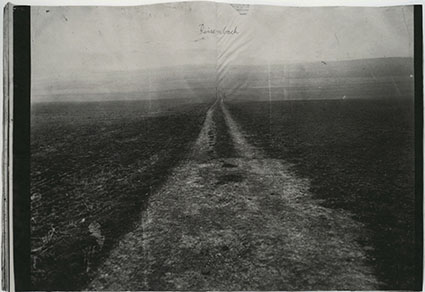
Anselm Keifer. I love this artist’s work, and in particular his books, of which this is one. The distressing of the photographic image and its inclusion in a book makes me think it’s a history of the end of the world…that has been left out in the atomic rain.
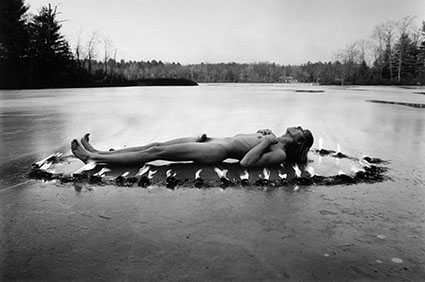
Arno Minkinnen. Arno’s “subject” has been his body for so long that he has found the deepest caves of the mind. They are not only what he thinks but of what they make me think. In this case I see some Finnish shamanistic ritual that takes place at the threshold of life/death, with passage going either way.
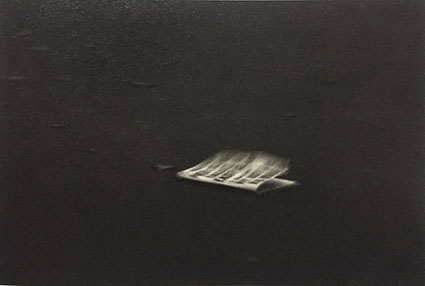
Diane Arbus. This seems to sum up all the mystery of her seeing. The more you think and say about this image, the further afield you drift. Just look at it and shut up.
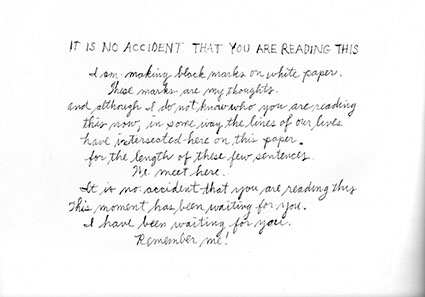
Duane Michals. So often we look at a photograph. Here we start to read it and realize that we are being drawn in as a player, as a subject of the…picture. And so is anyone else who looks at it. Fantastic!
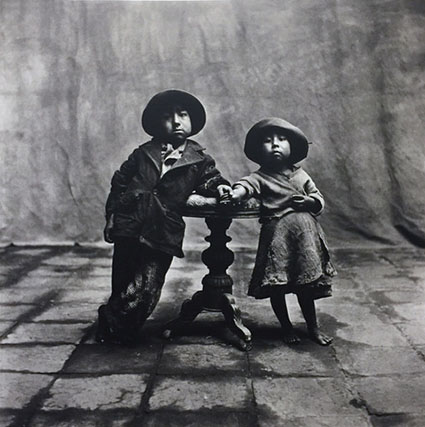
Irving Penn. This photo knocked me out when I saw it. It is not documentary. Instead Penn has bridged the world of the highland Quechuan Indians of Peru and the formality of Brozino, the great Rennaisance portraitist.
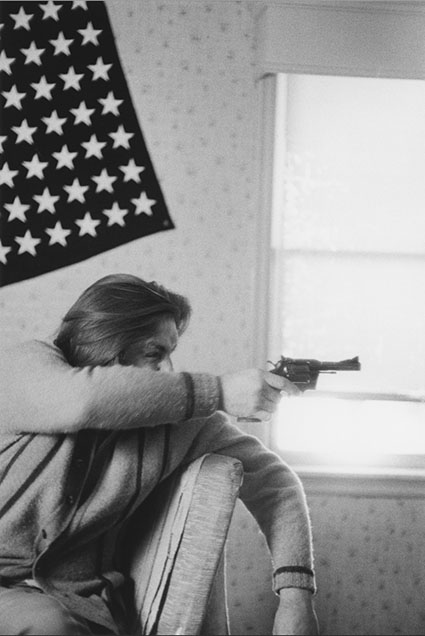
Larry Clark. Photographers love to visit other worlds (see Penn, above), but Larry lived in the drug world and he had a camera. Tough, tough pictures. To learn more, read Dennis Johnson’s book, Jesus’ Son.
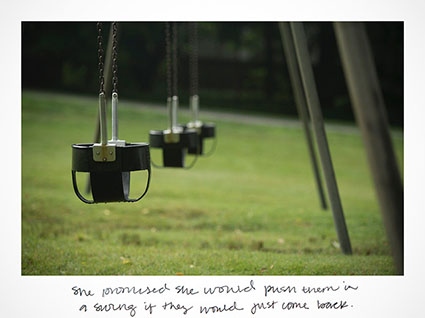
Michelle Elloway. This picture started as a workshop assignment to photograph a place where something had happened. I said nothing about writing down what it was that had happened, but the photographer blew the class away by writing the results of the event, turning the whole thing into a chilling Shirley-Jackson moment. (If you don’t know Shirley Jackson, read The Lottery.
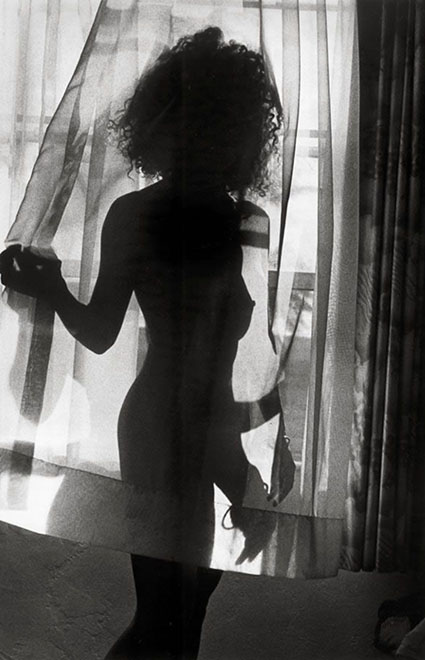
Ralph Gibson. Ralph’s work is sui generis, very simple, graphic and pregnant. This photo isn’t really like that, thanks to that wavering curtain, I think.
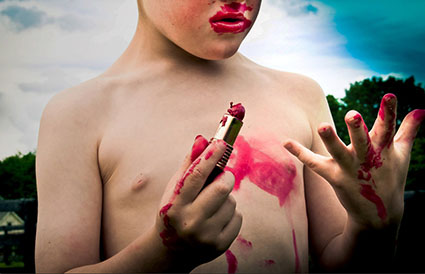
Rebecca Biddle Mossman. I love pictures that get beyond thinking. I am sure that the photographer just started off the situation, then saw something and pushed it, then just let it happen. (That’s my guess.) It’s the best way of working, and it leads to photos that you can’t believe you took.
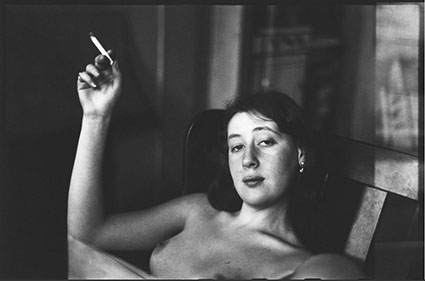
Saul Leiter. I’m giving him three, because he is new to me and because he has a freedom that I wish I had! The first is just saucy, impudent, sexy and innocent. I look at this woman and I just want to give her a shirt and take her out for coffee. She’s young in the picture, but I’d still love to meet her and say “So, tell me about your life.”
Or maybe not. Maybe it’s better to just suspend in the moment.
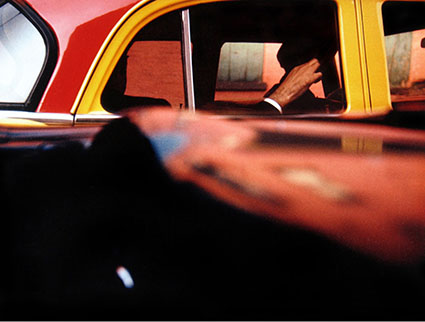
Saul Leiter. The second Leiter is just…ah…like watching a juggler make a perfect catch from completely off center.
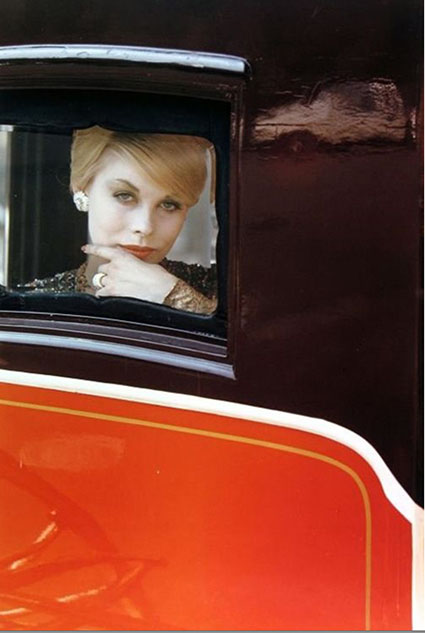
Saul Leiter. The third Leiter brings together three entirely different kind of images and resolves them while somehow leaving them intact.
Learn more about Sean Kernan here.
View 12 Great Photographs By Sean Kernan here.
Sign Up Today For My Thursday Newsletter

Sign up today for my Thursday newsletter.
This issue features HDR techniques and celebrates women in photography.
Inspiration From Photographer Sam Abell – Video
Sam Abell shares inspiration and insight into photography.
Learn more about Sam Abell here.
View 12 Great Photographs From Great Photographers.
View more in The Essential Collection Of Documentaries On Photographers.
Read more in The Essential Collection Of Quotes By Photographers.
Finding The Magnificent In The Mundane – Chris Orwig
“Chris Orwig brings unique perspective, creativity and passion to all that he does. As a photographer, he subscribes to Marc Riboud’s observation that “Photography is about savoring life at 1/100th of a second.” For Chris the adventure is now, and the journey has already begun — discover, look, listen, learn and live.”
Chris shares that what’s imperfect or broken can be a source of depth, strength, and inspiration.
Find out more about Chris Orwig here.
Find his books Visual Poetry and People Pictures here.
22 Ways To Find Inspiration

How do I find inspiration?
Let me count my ways.
1 Walk in nature
2 Visit a new place
3 Plan a future trip
4 Read
5 Listen to music
6 Watch movies
7 Look at artwork
8 Review my finished images
9 Review my unfinished images
10 Make new images spontaneously
11 List new creative things to try
12 Try something new creatively
13 Sketch ideas
14 Free associate
15 Brainstorm
16 Meditate
17 Daydream
18 Dream
19 Play like/with a child
How do you find inspiration?
The next time that doesn’t work, try one (or more) of these things.
I recommend you practice some or all of these things regularly.
Don’t wait to run dry.
Keep yourself overflowing all the time.
Find more resources on Creativity here.
Learn more in my digital photography workshops.


